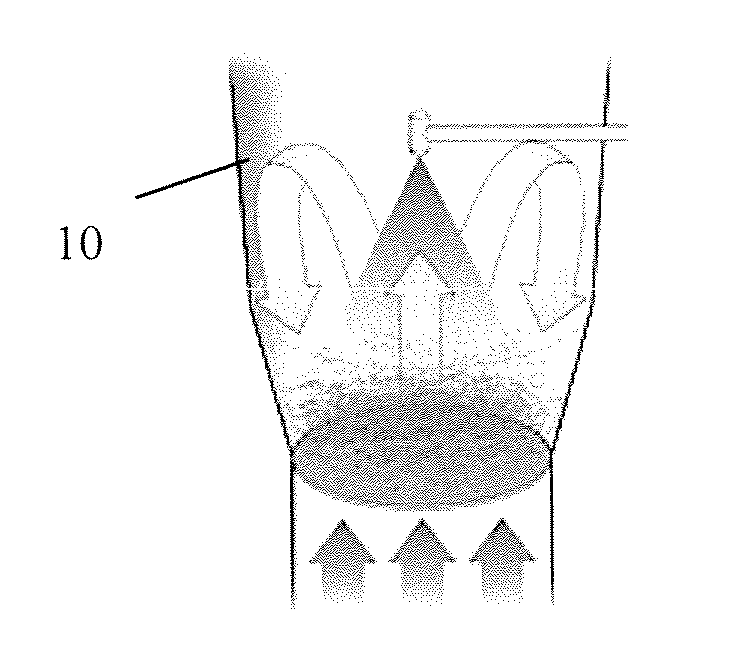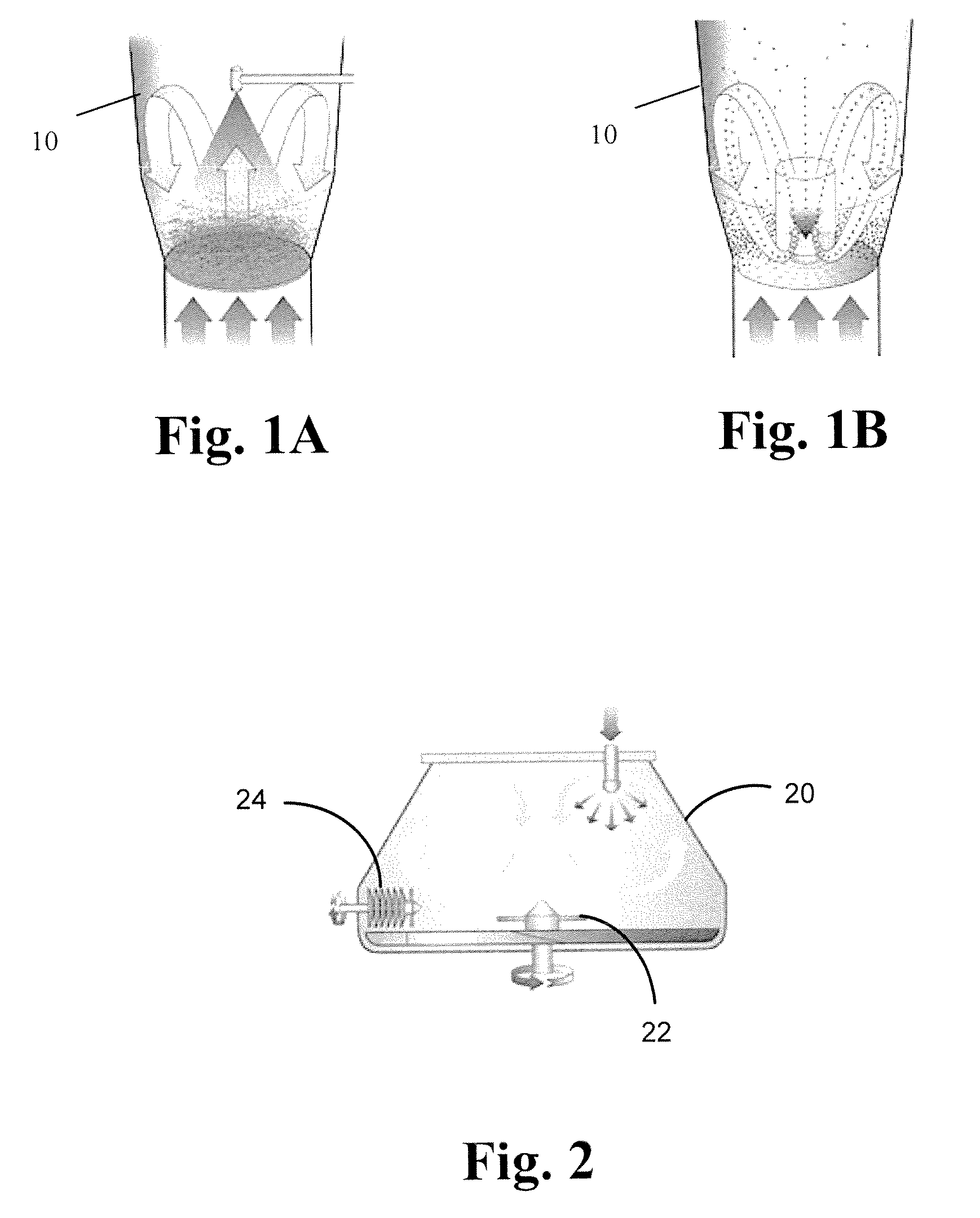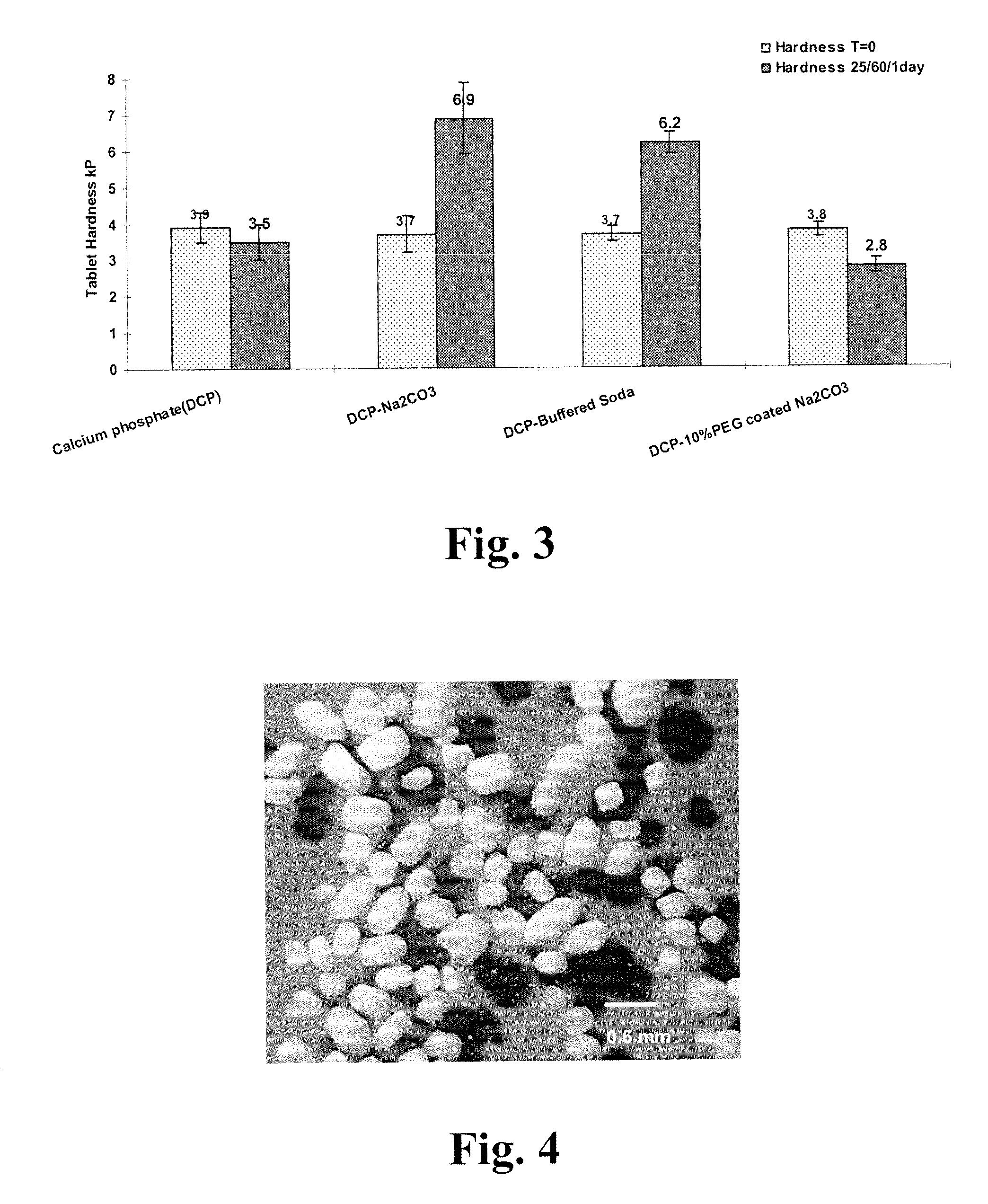Polyethylene glycol-coated sodium carbonate as a pharmaceutical excipient and compositions produced from the same
- Summary
- Abstract
- Description
- Claims
- Application Information
AI Technical Summary
Benefits of technology
Problems solved by technology
Method used
Image
Examples
example 1
[0052]Comparison of tablet hardening propensity of sodium carbonate and PEG-coated sodium carbonate was determined by measuring hardness of tablets containing each of sodium carbonate, buffered soda (individual particles of sodium bicarbonate and sodium carbonate), or PEG-coated sodium carbonate. Blends containing a 1:1 mixture of sodium carbonate (Na2CO3), buffered soda, or PEG-coated sodium carbonate, each with anhydrous dicalcium phosphate (DCP), were compressed to hardness of about 3.7 kP. A tablet of DCP alone was used as a control. TABLE 2 indicates the composition of each tablet compared in the study. The tablets were exposed to 25° C. and 60% relative humidity for 1 day and the hardness and moisture content were measured.
TABLE 2CalciumDCP-BufferedDCP-10% PEG coatedphosphate(DCP)DCP-Na2CO3SodaNa2CO3Ingredients(% wt / mg)(% wt / mg)(% wt / mg)(% wt / mg)Na2CO3 50 / 143.8 45 / 133.2PEG-3350 5 / 14.8Buffered Soda 43% 50 / 142Calcium 99.5 / 274.649.5 / 142.3 49.5 / 140.649.5phosphate (DCP) (an)Mg s...
example 2
Preparation of PEG-Coated Sodium Carbonate
[0054]The coating liquid was prepared by dissolving 50 g of polyethylene glycol 3350 mol. wt (PEG 3350) in 200 ml of (80:20) isopropyl alcohol and water. The solution of PEG 3350 was sprayed on sodium carbonate (450 g) in a planetary mixer while mixing for 17 minutes. The resulting granulated material was sieved in a 20 mesh sieve and transferred to a steel tray and dried in an oven for 24 hours at 60° C. FIG. 4 shows a stereomicroscopy picture of the granular material obtained by the above-described process. FIG. 5 shows the granular material obtained by the above-described process under a polarized light microscope.
[0055]The final material was quantified for amount of PEG (as wt %) in the coating layer. The moisture content of the final material was determined for this purpose. Additionally, the amount of sodium carbonate was determined by titration. The following equations 1, 2 and 3 were used to calculate the extent of PEG coating.
Gramso...
example 3
Preparation of PEG-Coated Sodium Carbonate
[0057]The coating liquid was prepared by dissolving 50 g of polyethylene glycol 3350 (PEG3350, mol. wt. 3350) in 200 ml of water. Sodium carbonate (450 g) was coated with the PEG 3350 solution in a bench top fluid bed granulator (FluidAir Model 002) using the bottom spray (Wurster coating) with further drying in the same granulator. The coating conditions used are detailed in TABLE 4 below. The coated particles were then discharged and sifted through a 20 mesh sieve. The final yield of PEG-coated sodium carbonate was 95.4%. FIG. 6 is a stereomicroscopy picture of the granular material obtained by the above-described process. The final material was quantified for amount of PEG (as wt %) in the coating layer as described above. Results for estimation of % PEG in the sample is shown in TABLE 5 below.
TABLE 4Inlet air temperature75° C.-80° C.Outlet air temperature (during coating, record only)37°C.Outlet air temperature (during drying, record onl...
PUM
| Property | Measurement | Unit |
|---|---|---|
| Temperature | aaaaa | aaaaa |
| Fraction | aaaaa | aaaaa |
| Fraction | aaaaa | aaaaa |
Abstract
Description
Claims
Application Information
 Login to View More
Login to View More - R&D
- Intellectual Property
- Life Sciences
- Materials
- Tech Scout
- Unparalleled Data Quality
- Higher Quality Content
- 60% Fewer Hallucinations
Browse by: Latest US Patents, China's latest patents, Technical Efficacy Thesaurus, Application Domain, Technology Topic, Popular Technical Reports.
© 2025 PatSnap. All rights reserved.Legal|Privacy policy|Modern Slavery Act Transparency Statement|Sitemap|About US| Contact US: help@patsnap.com



